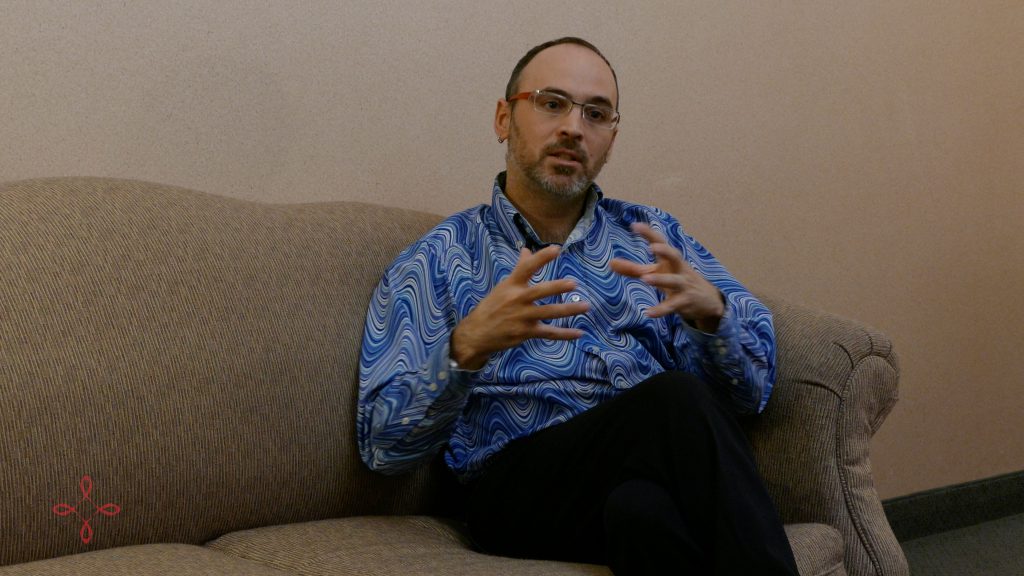Speaking at the Northern Exposures conference in Dryden, in November, 2015, Tim Guimond describes the Hidden Populations study and how it revealed social isolation among men who have sex with men in rural and remote areas.
Transcript
My name is Tim Guimond I’m a psychiatrist. I work in something called concurrent disorders—so it’s individuals with both a substance use problem and a mental health problem.
So the “Hidden Populations” study was looking at gay, bisexual and other men who have sex with men in really more remote communities.
So we know in Ontario that when we do HIV testing there are people who are sero-converting who live in smaller towns and more rural areas, who are telling us that their risk factor for seroconversion is being a man who has sex with men. The issue is that the community-based AIDS organizations are having a hard
time attracting those men to come to their centers in order to engage with them around education.
So this was a study that was planned out by five of the northern and more small-town ASOs to really figure out what’s going on there and what could we do to improve it? We used a strategy called “respondent driven sampling.” The idea was you find a couple of people in the community and ifthis one person met the criteria we asked them to find other people theyknew who could also answer the same kinds of questions, that were also gaybisexual or a man have sex with men andwe would you know pay them some money for recruiting for us and pay them tocome do the interview.
Unfortunately—and this has been a strategy, it’s been used in lots of different research, when you’ve got these really hidden populations, like with sex workers it’s been used with gay men in other settings— it did not work for us. And when we ended up getting interviews, like we instead had to just keep looking for people who could be that first person when we heard from them they were saying that so often they’re connecting by the internet, they’re connecting through apps, but they don’t actually meet face-to-face and they feel very isolated. And they really want to have social, but not sexual, environments to hang out meet other men and to kind of be comfortable and to be able to make friendship networks.
And so that was a huge theme in this. These are men who are engaging in behaviors that put them at risk of HIV, some of them are HIV positive already, but it really told us that there’s a barrier to get coming to the ASO it’s about the thing they need most doesn’t necessarily first register in our mind as an HIV prevention strategy. But I think it might be reasonable to think that in larger cities what allowed the ASOs to get established was that there was already a network of gay and bisexual men who who had strong allegiance to their own community and wanted to keep other men safe. And that’s where we started and so it might not have been a necessary kind of component, whereas now …
The other thing that the that each of the respondents told us about is that they’re concerned about youth in their community. If some people are gonna get to an age and decide they were to leave the small town and move to a big city because they want to find other gay man, but until that happens those young
people are very isolated and subject to bullying, and there was a lot of our participants were saying we need to be doing something for those individuals.
So both in the way in which we had such difficulty in recruiting, and the things they told us, it became very clear that gay and bisexual men who live in rural or small-town areas feel very isolated, are very disconnected from other men like them, and they’re ultimately very lonely. I think this is a big problem when we think about mental health. Because to be that lonely and isolated is connected with feeling depressed, anxious and social isolation is you know a really devastating thing for people. And when we already know the rates of suicide among young gay men and queer people is high, there’s all sorts of indicators that suggest this is one of those ways that we could intervene early in the syndemic, which would be very useful.
